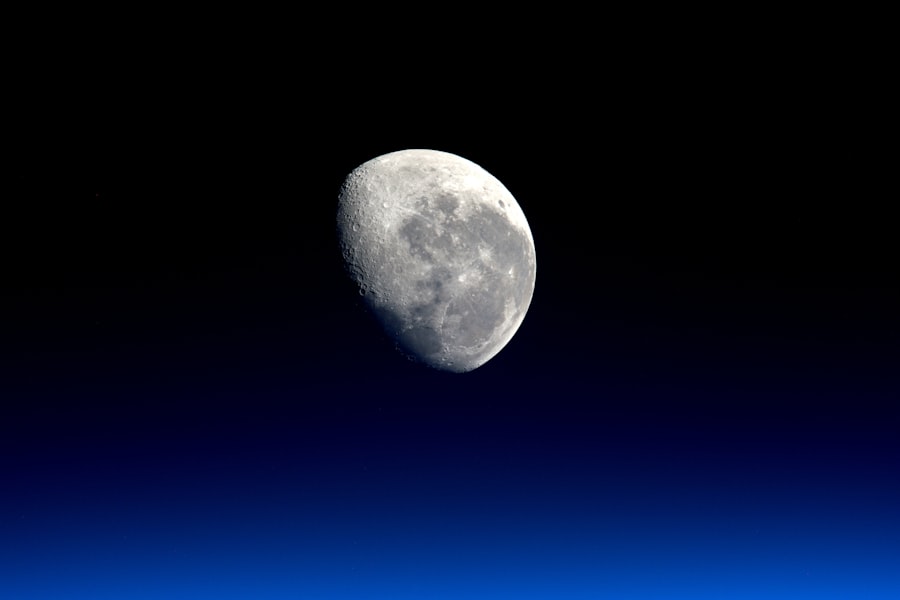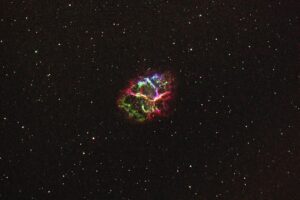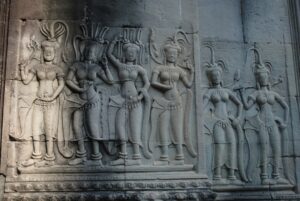The Moon, Earth’s only natural satellite, has captivated humanity for millennia. Its silvery glow has inspired countless myths, artistic expressions, and scientific inquiries. Orbiting our planet at an average distance of approximately 238,855 miles (384,400 kilometers), the Moon plays a crucial role in various natural phenomena and has been a focal point for human exploration.
Its surface, marked by craters and maria, tells a story of cosmic history and geological processes that have shaped not only the Moon itself but also the Earth. As we delve deeper into the mysteries of the Moon, we uncover its significance in our understanding of planetary formation, the dynamics of celestial bodies, and even the potential for future human habitation beyond Earth. The Moon’s presence in the night sky has been a source of wonder and curiosity.
From ancient civilizations that worshipped lunar deities to modern scientists who study its geology and atmosphere, the Moon has been a constant companion in humanity’s quest for knowledge. Its phases have guided agricultural practices, influenced cultural rituals, and even shaped calendars. As we embark on a journey to explore the Moon’s origin, characteristics, and its profound impact on Earth and human culture, we begin to appreciate not just its beauty but also its importance in the broader context of our solar system.
Key Takeaways
- The Moon is Earth’s only natural satellite and has been a source of fascination and inspiration for humans throughout history.
- The Moon is believed to have formed from debris created by a giant impact between Earth and a Mars-sized body early in the history of the solar system.
- The Moon has a rocky surface with mountains, valleys, and impact craters, and lacks a significant atmosphere or liquid water.
- The Moon’s gravitational pull causes the Earth’s tides, influencing coastal ecosystems and human activities such as fishing and navigation.
- The Moon has been a central figure in human culture and mythology, inspiring art, literature, and religious beliefs across different civilizations.
The Origin and Formation of the Moon
The prevailing theory regarding the Moon’s origin is known as the Giant Impact Hypothesis. This theory posits that around 4.5 billion years ago, shortly after the formation of the solar system, a Mars-sized body named Theia collided with the early Earth. The immense energy released during this cataclysmic event caused a significant portion of Earth’s outer layers to be ejected into space.
Over time, this debris coalesced under the influence of gravity to form what we now recognize as the Moon. This hypothesis is supported by various lines of evidence, including isotopic similarities between Earth and lunar rocks, suggesting a shared origin. Further research into lunar geology has provided insights into the Moon’s formation process.
The analysis of lunar samples brought back by Apollo missions revealed that the Moon’s surface is primarily composed of basaltic rock, formed from volcanic activity. This volcanic activity is believed to have occurred shortly after the Moon’s formation when it was still geologically active. The presence of anorthosite, a type of rock that is lighter and less dense than basalt, indicates that the Moon underwent significant differentiation during its early history.
The Physical Characteristics of the Moon

The Moon’s surface is a fascinating tapestry of geological features that reflect its tumultuous history. One of its most striking characteristics is its heavily cratered landscape, which serves as a record of impacts from asteroids and comets over billions of years. The largest craters, such as Tycho and Clavius, are visible even with small telescopes from Earth.
The lack of an atmosphere on the Moon means that these craters remain well-preserved, providing valuable information about the solar system’s history. In addition to craters, the Moon is home to vast plains known as maria, which are dark basaltic plains formed by ancient volcanic eruptions.
These maria cover about 16% of the lunar surface and are primarily located on the side of the Moon that faces Earth. The contrast between the bright highlands and dark maria creates a striking visual effect that has led to various cultural interpretations throughout history. The Moon’s surface also features rilles—narrow channels formed by lava flows—and regolith, a layer of loose material that covers solid bedrock.
This regolith is composed of fine dust and small rock fragments created by micrometeorite impacts over time.
The Moon’s Role in Earth’s Tides
| Metric | Description |
|---|---|
| Tidal Range | The difference in height between high and low tides |
| Spring Tide | Occurs when the sun, moon, and earth are aligned, causing higher high tides and lower low tides |
| Neap Tide | Occurs when the sun and moon are at right angles to each other, causing lower high tides and higher low tides |
| Gravitational Pull | The moon’s gravitational pull causes the bulging of the ocean on the side facing the moon, creating high tide |
| Centrifugal Force | The centrifugal force caused by the earth and moon’s rotation creates a second bulge on the opposite side, creating high tide on the opposite side as well |
The gravitational pull exerted by the Moon has a profound impact on Earth’s oceans, leading to the phenomenon known as tides. As the Moon orbits Earth, its gravitational force causes water to bulge outwards on the side of Earth facing the Moon, creating a high tide. Conversely, on the opposite side of Earth, another high tide occurs due to the centrifugal force resulting from Earth’s rotation.
This interplay between gravitational attraction and centrifugal force results in a regular cycle of rising and falling sea levels. Tides are not only influenced by the Moon; they are also affected by the Sun’s gravitational pull. However, because the Moon is much closer to Earth than the Sun, its influence is more pronounced.
The combined gravitational effects of both celestial bodies lead to variations in tidal patterns known as spring and neap tides. Spring tides occur when the Sun, Earth, and Moon are aligned during full moons and new moons, resulting in higher high tides and lower low tides. In contrast, neap tides occur when the Sun and Moon are at right angles relative to Earth during the first and third quarters of the lunar cycle, leading to lower high tides and higher low tides.
The Moon’s Influence on Human Culture and Mythology
Throughout history, the Moon has held a significant place in human culture and mythology across various civilizations. Ancient cultures often associated the Moon with deities representing fertility, timekeeping, and navigation. For instance, in ancient Egypt, Thoth was revered as a lunar god associated with wisdom and writing.
Similarly, in Greek mythology, Selene was depicted as a goddess who drove her chariot across the night sky, illuminating it with her silvery light. The Moon’s phases have also played a crucial role in shaping calendars and agricultural practices. Many cultures relied on lunar cycles to determine planting and harvesting times.
The Islamic calendar is based on lunar months, while traditional Chinese calendars incorporate lunar cycles for festivals such as the Mid-Autumn Festival. Folklore surrounding the Moon often reflects its influence on human behavior; for example, many cultures believe that full moons can affect emotions or lead to unusual occurrences.
The Exploration and Study of the Moon

The exploration of the Moon reached a historic milestone during NASA’s Apollo program in the 1960s and 1970s. Apollo 11 marked humanity’s first successful manned mission to land on the lunar surface on July 20, 1969. Astronauts Neil Armstrong and Buzz Aldrin became instant icons as they took humanity’s first steps on another celestial body.
The Apollo missions not only provided invaluable scientific data but also returned over 800 pounds (approximately 382 kilograms) of lunar rock samples to Earth for analysis. Subsequent missions expanded our understanding of the Moon’s geology and environment. Apollo 12 through Apollo 17 continued to explore different regions of the lunar surface, conducting experiments and deploying scientific instruments.
These missions revealed crucial information about lunar volcanism, impact cratering processes, and even potential resources such as water ice in permanently shadowed craters at the poles. The data collected during these missions laid the groundwork for future lunar exploration efforts.
The Potential for Future Moon Missions and Colonization
As interest in lunar exploration has surged in recent years, various space agencies and private companies are planning ambitious missions aimed at returning humans to the Moon and establishing a sustainable presence there. NASA’s Artemis program aims to land “the first woman and the next man” on the lunar surface by 2024 as part of a broader goal to establish a sustainable human presence by 2028. This initiative seeks to create a lunar base that could serve as a stepping stone for future missions to Mars.
In addition to government-led efforts, private companies like SpaceX are developing technologies that could facilitate lunar colonization. SpaceX’s Starship is designed for deep-space travel and could play a pivotal role in transporting astronauts and cargo to lunar bases. Furthermore, international collaborations are emerging as countries like China and Russia express interest in establishing their own lunar outposts.
These endeavors raise questions about governance, resource utilization, and international cooperation in space exploration.
The Moon’s Importance for Scientific Research and Understanding of the Universe
The scientific significance of studying the Moon extends far beyond its immediate vicinity; it serves as a window into understanding planetary formation processes throughout our solar system. By examining lunar geology and comparing it with terrestrial geology, scientists can gain insights into Earth’s history and evolution. The Moon’s lack of atmosphere allows for well-preserved geological features that provide clues about impact events that have shaped not only our planet but also other celestial bodies.
Moreover, ongoing research into lunar resources holds promise for future space exploration endeavors. The presence of water ice in permanently shadowed craters could provide essential resources for sustaining human life on long-duration missions or even serve as fuel for spacecraft traveling deeper into space. Additionally, studying cosmic radiation levels on the Moon can inform strategies for protecting astronauts during extended stays beyond Earth’s protective atmosphere.
In conclusion, as we continue to explore our celestial neighbor, we unlock not only its secrets but also enhance our understanding of our own planet and its place in the cosmos. The Moon remains an enduring symbol of human curiosity and ambition—a testament to our desire to reach beyond our terrestrial confines and explore new frontiers in science and exploration.
In exploring the vast and intriguing subject of the Moon, one might find it interesting to delve into the philosophical perspectives that have shaped human understanding of celestial bodies. A related article that provides insight into philosophical thought is titled “Exploring the Key Aspects of Carvaka Philosophy.” This article discusses the Carvaka school of thought, which is known for its materialistic and skeptical approach to metaphysics, including the rejection of supernatural phenomena. Such perspectives can offer a unique lens through which to consider the Moon and its place in human culture and understanding. For more on this topic, you can read the full article here.





















+ There are no comments
Add yours